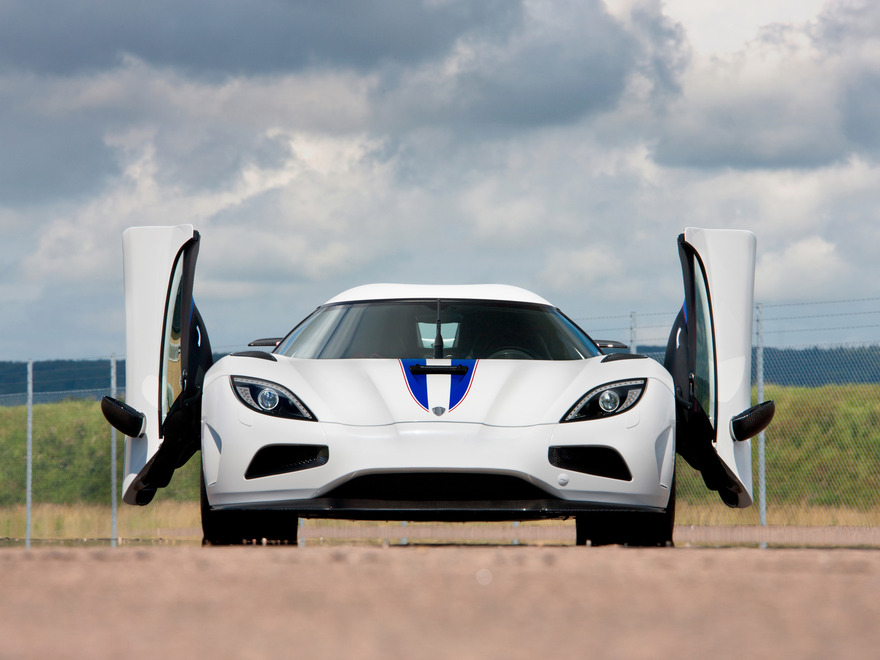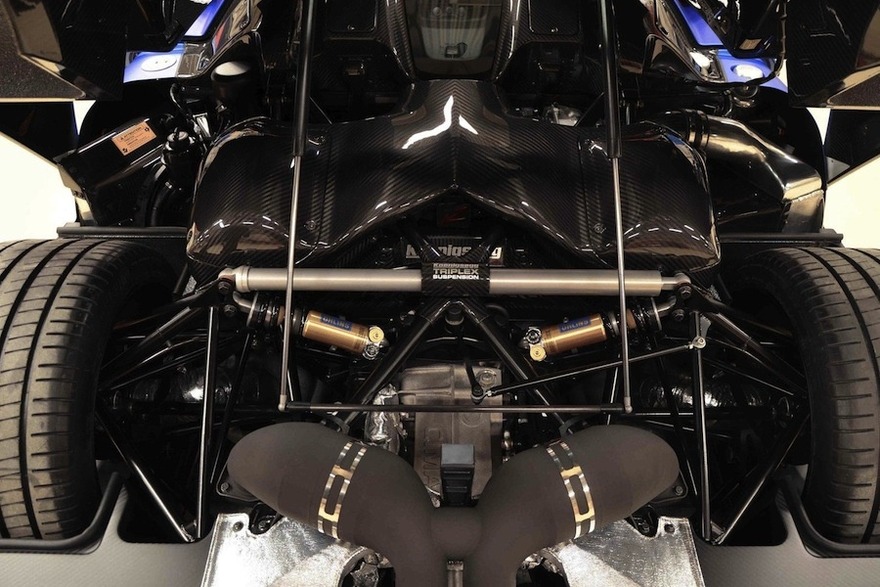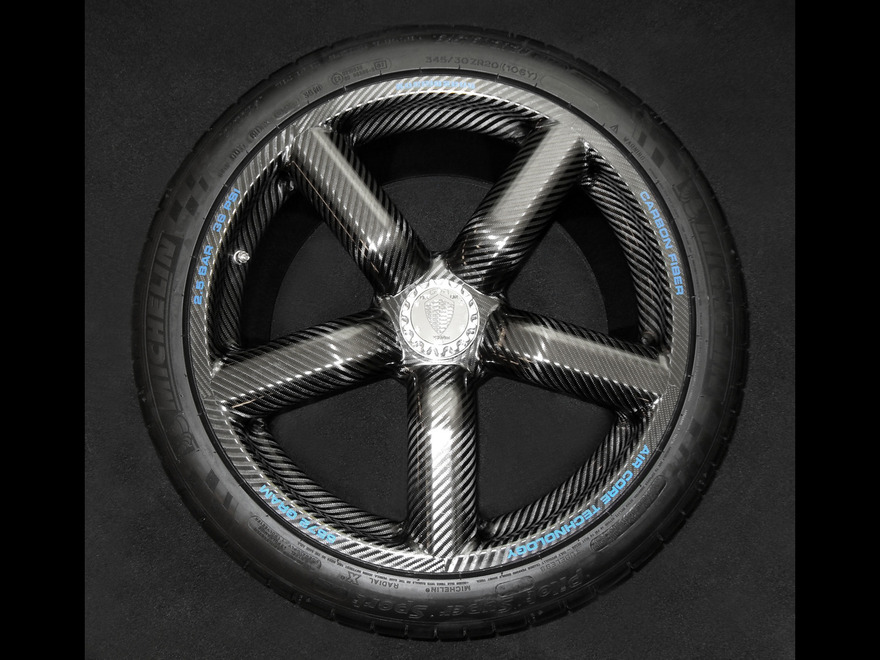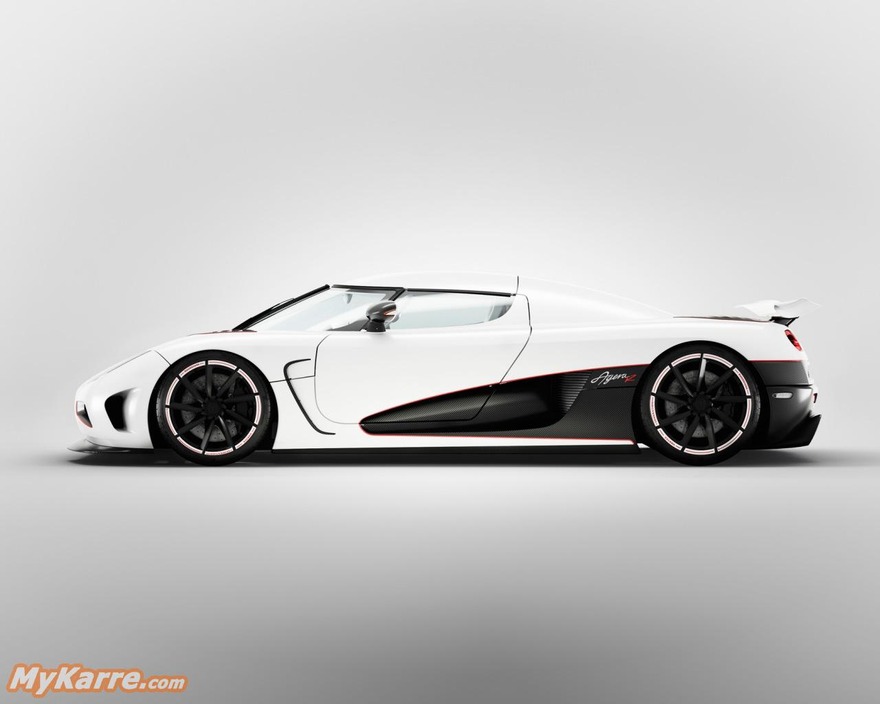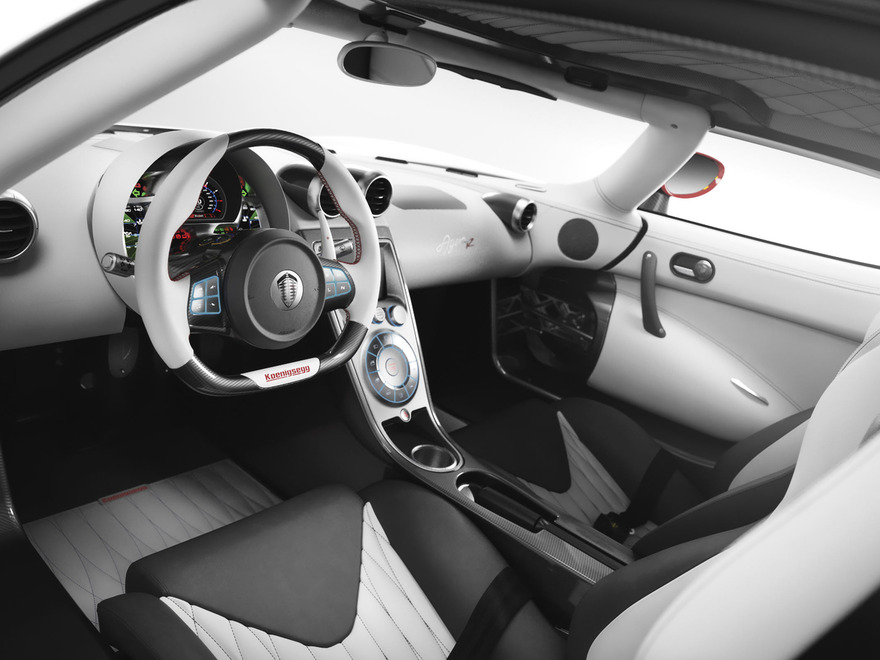A 22-year-old Swedish mechanic Christian von Koenigsegg founded his own exclusive supercar company, Koenigsegg Automotive AB, in 1994. In pursuit of perfection he produced 9 hypercars with Agera becoming the anniversary model. In the beginning of March 2011 at the Geneva Motor Show the company unveiled its 1115-hp hypercar Koenigsegg Agera R. In 2012 Koenigsegg revealed an upgraded Agera R 2013 version which was launched in production. Now the high velocity exclusive car can be powered by biofuel.
Mass production Koenigsegg Agera R 2013 is 25-hp more powerful and 20-kg lighter than the previous model. It has an overall dry weight of 1330 kg, a curb weight of 1435 kg (all fluids plus 50% fuel), maximum laden weight of 1600 kg (full tank, two passengers, full luggage). The hypercar measures 4293 mm in length, 1996 mm in width, and 1120 mm in height. It has rear mid-engine, rear-wheel drive layout. It has a ground clearance of 100 mm which can be electronically adjusted.
It’s a two-door, two-seater with removable hardtop stowable under the front hood lid. The car’s body and chassis are made of carbon fibre, kevlar and aluminium honeycomb. The monocoque chassis weighs only 70 kg and its torsional rigidity shows the astonishing 65000 Nm/degree.
ENGINE
The car is fitted with a 5-litre TwinTurbo V8 engine adjusted to run on biofuel — it’s one of the lightest and most compact engines in the world. It weighs just 197 kg complete with flywheel and clutch.
The power produced by the engine depends on the choice of fuel — the engine produces 1115 hp when running on E85 biofuel, 1050 hp — on 98 octane petrol. When run on 95 octane petrol, the engine produces 940 hp (at 6900 rpm) and 1200 Nm of torque at 4100 rpm with 1000 Nm available in the range from 2700 to 6170 rpm. The peak horsepower produced by the engine of Agera R 2013 is 1140 hp.
The turbines are made of aluminium-titanium alloy which notably reduces the inertia of the turbine. Koenigsegg features dry sump lubrication system, carbon fibre intake manifold and inconel exhaust system manifold. A lighter TIG-welded ceramic coated inconel exhaust system is made of hot-strength nickel-based alloy with merge collector. Koenigsegg vehicles use Valvoline oils as factory lubricant.
NANOTECHNOLOGY
For the first time Agera R 2013 uses nano-surfaced cylinder sleeves from Swedish Nanotech company. It allows reducing friction of piston seals and cylinders which in its turn reduces fuel consumption. Due to this fact the engine gets more power with its peak revolutions increasing from 7250 rpm to 7500 rpm.
Bore — 91.7 mm, stroke — 95.25 mm. Agera R 2013 features sequential, multipoint fuel injection and 1.4 bar of boost pressure.
TRANSMISSION
Power is delivered via a seven-speed dual-clutch single input automated manual gearbox, jointly developed with Cima, and an electronic differential lock. The car features shifting paddles which are mounted directly on the steering wheel.
SUSPENSION
The unique Triplex rear suspension with the adjustable horizontal middle spring was developed in cooperation with Ohlins Racing. KES (Koenigsegg Electronic Stability) system serves as a standard for all Koenigsegg models. The Agera R also has F1 style traction control with 5 different modes and Solid State digital system which provides the work of electric connections without any fuses or relays.
Wishbones are made from seamless chrome-molybdenum tubing for the purpose of weight reduction accompanied by an increase in stiffness and rigidity.
The very large bearings contribute to the overall stiffness of the wheel assembly and provide better control, handling and comfort. In order to maximise brake cooling the uprights have large diameter carbon fibre cooling ducts (4.5″) for the brake discs.
Agera R features shock absorbers fitted with the system when two rear wheels can influence one another when desired. It gives better comfort and handling results on rough and wet surfaces.
BRAKES
The sports ABS braking system is fitted with massive 6-piston braking mechanism with 397-mm carbon-ceramic disks mounted at the front axle and 4-piston 380-mm disks at the rear axle providing effective braking regardless of track or road condition.
WHEELS
The weight of the car was reduced by 20 kg due to the in-house development made by the company’s engineers — Aircore technology. Light wheel disks are made of carbon fibre. They are hollow and the only metal part in the wheel is the tyre valve.
The car is supplied with special Michelin Supersport unidirectional tyres with asymmetric thread pattern. These tyres can be used with speeds of up to 420 km/h.
AERODYNAMICS
Due to the massive aerodynamic rear wing the drag coefficient of Agera is only 0.33 in high-speed mode and 0.37 in sports mode.
Body shape and aerodynamic tunnels create an additional downforce when moving at 250 km/h. Front side winglets of Agera R 2013 are intended to increase the stability of the car when performing extreme braking at high speeds. Also they provide additional 20 kg of downforce at the same 250 km/h causing notable drag reduction. The car can stand up to 1.6G of lateral g-force.
The model features the new dynamic rear wing. Its angle of attack depends on the speed of the vehicle and constantly changes according to wind resistance.
SPEED
In March 2013 Koenigsegg Agera R 2013 was recorded as the fastest mass production vehicle.
0–100 km/h in 2.9 sec
0–200 km/h in 7.5 sec
0–300 km/h in 14.53 sec
Its top speed is 439.35 km/h. Agera’s development engineer Christian von Koenigsegg claims that in case the car is provided with tyres of higher durability and no headwind Koenigsegg Agera R 2013 will be able to accelerate to 453 km/h.
FUEL
80-litre carbon fibre fuel tank is well protected and located in the middle of the car providing it with optimal weight distribution (in proportion 45:55 front to rear axle) in spite of the tank fuel level.
Koenigsegg Agera R 2013 can by powered by two types of fuel — petrol (95 and 98) and E85 biofuel (85% of ethanol) having octane rating of 113 RON. When run on biofuel, the power produced by the engine of the hypercar reaches 1140 hp. Fuel consumption rate has been reduced in comparison with the previous model — 12.5 l/100km on highway and 14.7l/100km on combined highway and city drive.
DESIGN, MULTIMEDIA
Its exterior is similar to Agera R — big and bright, aggressive and streamlined, long and wide. Its cabin is shifted forward, it has a wide windscreen, elongated side windows, huge air intakes. The interior of Agera R 2013 is minimalistic and efficient in a truly Swedish style — leather, aluminium, carbon fibre, precious metals (a silver key).
The car is fitted with plenty of multimedia equipment, central high-definition touch screen, satellite navigation, climate control, alarm, tyre monitoring system. The supercar also features airbags and 4 point seatbelts. The illumination shines through micro holes, creating excellent visibility of the symbols as well as a very clean and stylish appearance.
HANDLING
Modern super fast hypercars are comfortable and controllable even at high speeds. But one should learn how to handle the Agera R 2013 in order to experience its full potential. Otherwise the first newbie ride might become the last one. Driving Agera R is a dangerous mixture of adrenalin, horror and delight and one gets used to this mixture really fast. Ask any racing driver.
PRICE
The price tag of an “eco-friendly rocket” is €1.5million.
INTERESTING TO KNOW
1) Potential customers can choose any colour of both the exterior and interior of the supercar with the help of an online configurator available on the official Koenigsegg site.
2) Optional features include the Inconel exhaust system, rear view camera, heated seats, winter wheel package, roof storage bag, ski box roof and even skis. Looks like Koenigsegg supports active recreation.
3) All Koenigsegg cars come with a 3 year warranty.
4) Koenigsegg Agera R is on the list of top ten most expensive cars in the world.
5) As they used to say: Nomen est omen. Agera in Swedish means “to take action”. It is also short for the ancient Greek word Ageratos which means “ageless”.
6) The very first vehicle in the Agera R series with red exterior, black interior and round steering wheel was ordered by and delivered to the Royal Family of Oman.
7) WORLD RECORD. A standard Koenigsegg Agera R hypercar producing 1115 hp set 6 official world records at the Koenigsegg test ground on September 2, 2011.
Acceleration time:
0–300 km/h — 14.53 sec
0–322 km/h — 17.68 sec
Deceleration time:
300–0 km/h — 6.66 sec
322–0 km/h — 7.28 sec
Acceleration-deceleration time:
0-300-0 km/h — 21.19 sec
0-322-0 km/h — 24.96 sec
Photo: www.cadde25.com, www.mykarre.com, www.autowp.ru

